The State Department in 1947
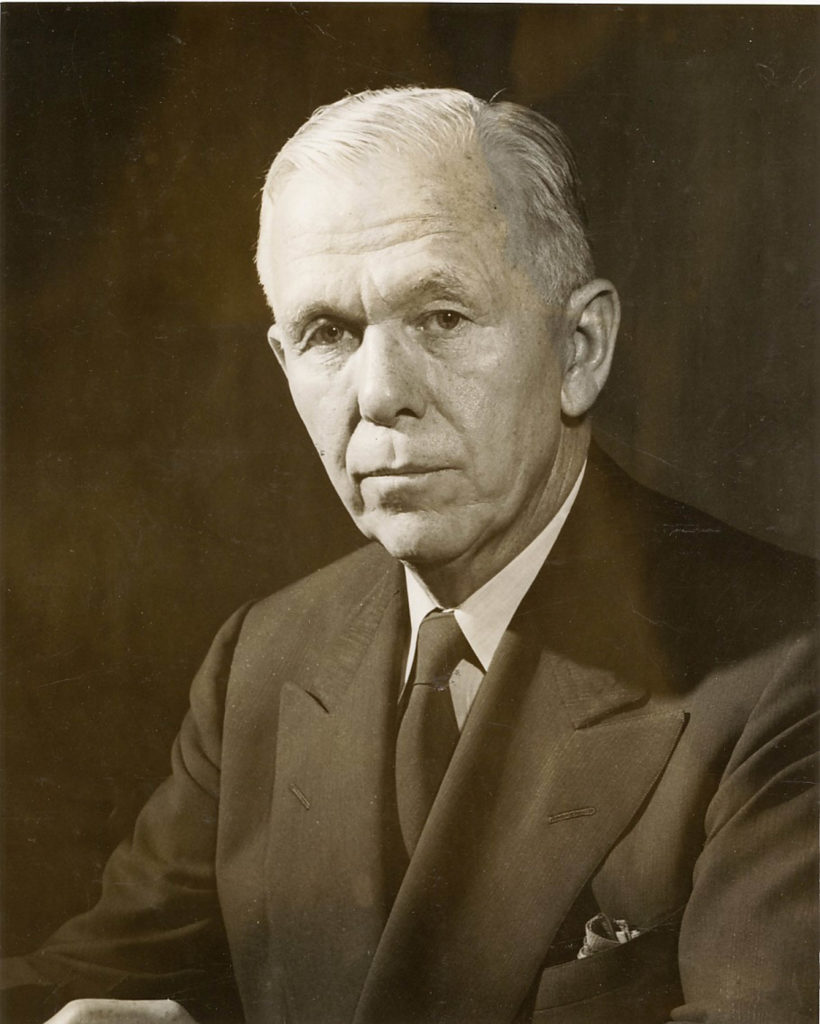
Secretary of State George Marshall
George C. Marshall was sworn in as secretary of state in January 1947, and served as in President Harry Truman’s cabinet from 1947 to 1949, during a critical time for post-war Europe. Marshall was awarded the Nobel Peace Prize in 1953 for work he did as Secretary of State, including the European Recovery Plan, but it was certainly not a job accomplished by one person. He had quite an amazing staff helping him. These are some of the people working in the State Department in 1947 with George Marshall.
Dean Acheson served as under secretary of state. During World War II, while serving as assistant secretary of state, Acheson implemented the Lend-Lease policy that supplied Great Britain with military equipment. Near the end of the war, he was the State Department representative at the Bretton Woods Conference, which set up the International Monetary Fund and the World Bank.
With Marshall, Acheson helped create the policy that gave post-war aid to Greece and Turkey; he was instrumental in the foreign policy later known as the Truman Doctrine, which supported democratic governments from threats of “authoritarianism.”
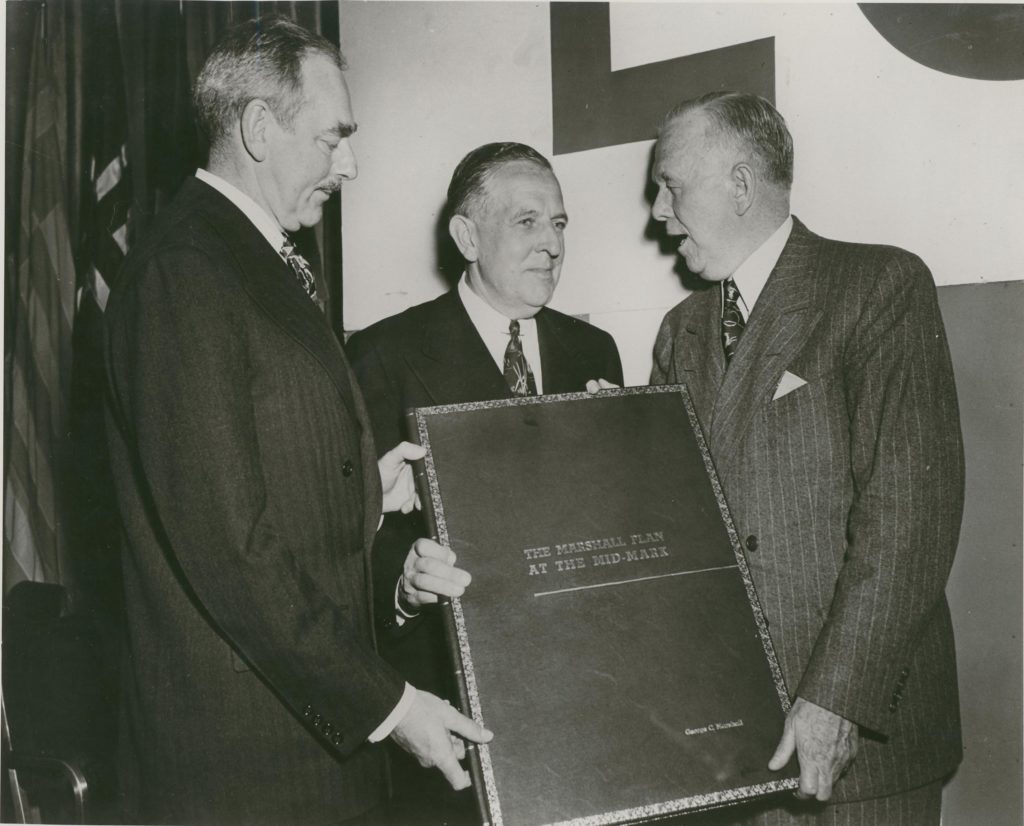
Presentation of book to General Marshall on second anniversary of the establishment of the Economic Cooperation Agency showing Marshall Plan achievements. Shown with Gen. Marshall are Dean Acheson and Paul Hoffman.
Paul Hoffman was the administrator of the Economic Cooperation Administration. He was the president of Studebaker before being asked to lead the ECA. Hoffman was responsible for the distribution of aid to Europe through the Marshall Plan. He favored the permanent reduction of trade barriers between European nations, keeping this temporary requirement of the Marshall Plan.

Charles Bohlen, over Premier Joseph Stalin’s left shoulder, at the Potsdam Conference in 1945. Bohlen served as an interpreter and advisor to President Harry Truman during the conference.
Charles “Chip” Bohlen was counselor to the State Department. He was a foreign service officer with an expertise in Asia, especially the Soviet Union. He researched and studied the Soviet Union while stationed in Paris, and subsequently served in the first U.S. embassy in the Soviet Union in 1934. Bohlen was working at the embassy in Tokyo in December 1941 and was interned there with other embassy staff for about six months. He was the head of the Eastern European Division when he accompanied the U.S. delegation to conferences in Tehran, Yalta, and Potsdam, frequently acting as presidential interpreter.
Bohlen was one of three authors of Secretary of State George Marshall’s “Marshall Plan” speech in 1947. In 1953, Bohlen was appointed ambassador to the Soviet Union by President Dwight Eisenhower. He advised every President from 1947-1968.
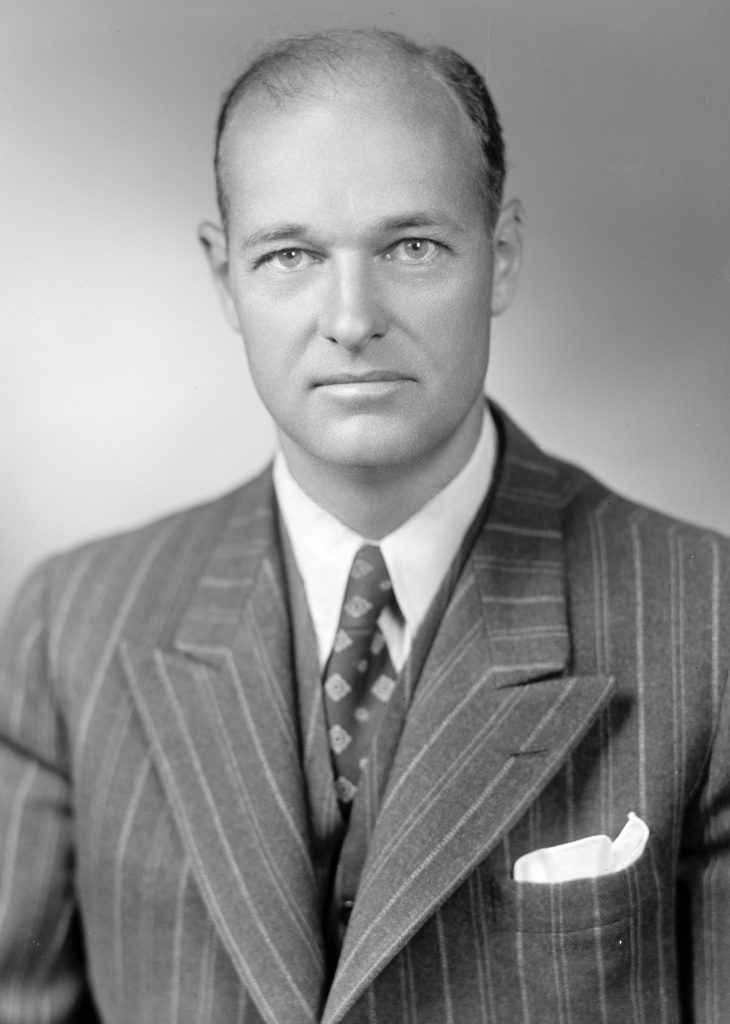
George Kennan as director of the Policy Planning Staff in 1947.
George Kennan served as director of the newly formed Policy Planning Staff, which was given the responsibility of taking a long-term view on State Department Policy. Marshall’s only directive when asking Kennan to lead the group was “avoid trivia.”
As a young foreign service officer, Kennan studied Russian while stationed in Berlin in 1929. He furthered his expertise on the Soviet Union while serving in Latvia, and was moved to Moscow after President Franklin Roosevelt’s election. Kennan was working in Berlin when the United States entered World War II and was interned there for six months. He administered intelligence operations in Portugal during the war. In 1944 once again found himself in Moscow as deputy chief of the mission, on the request of Ambassador Averell Harriman.
After the war, Kennan was first deputy for foreign affairs at the National War College when Marshall pulled him back into the State Department. Kennan was heavily involved in the work of the Marshall Plan. After leaving the State Department in 1950, he went to work for Robert Oppenheimer at the Institute for Advanced Studies at Princeton, moving to the School of Historical Studies there in 1956.
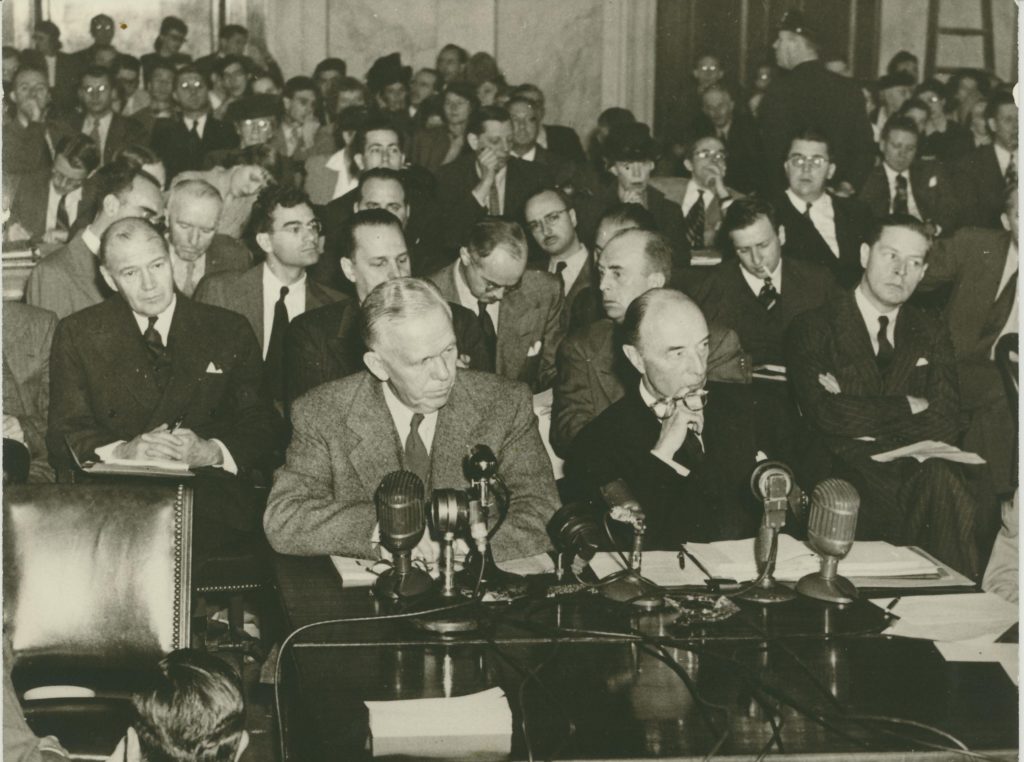
Secretary of State George Marshall and Under Secretary of State Robert Lovett testifying before the Senate Foreign Relations Committee on European recovery, November 1947.
Robert Lovett served as under secretary of state. He was a pilot in World War I, flying for the British and then the Americans. He worked in banking and industry in the interwar period, and was appointed special assistant for air affairs to Secretary of War Henry Stimson in 1940.
Marshall brought Lovett into the State Department where he worked with Sen. Arthur Vandenberg on the establishment of the North Atlantic Treaty Organization. Lovett was instrumental in getting the Economic Recovery Act of 1948 passed through Congress, which led to the Marshall Plan.
Marshall again called on Lovett when he became secretary of defense in 1950, asking Lovett to serve as deputy secretary of defense. Lovett followed Marshall as secretary of defense.
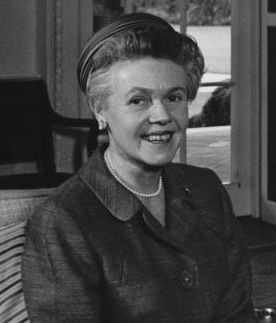
Ambassador Helen Moore Anderson, first woman to serve as an ambassador from the United States. She served as the ambassador to Denmark from 1949 to 1953.
It was during Marshall’s tenure at the State Department that Helen Moore Anderson was the first women appointed as a U.S. ambassador, serving in Denmark. Anderson had led the League of Women Voters in Minnesota and lectured on democracy and foreign affairs. During President Harry Truman’s administration she served on the Democratic state committee in Minnesota and on the Democratic National Committee.
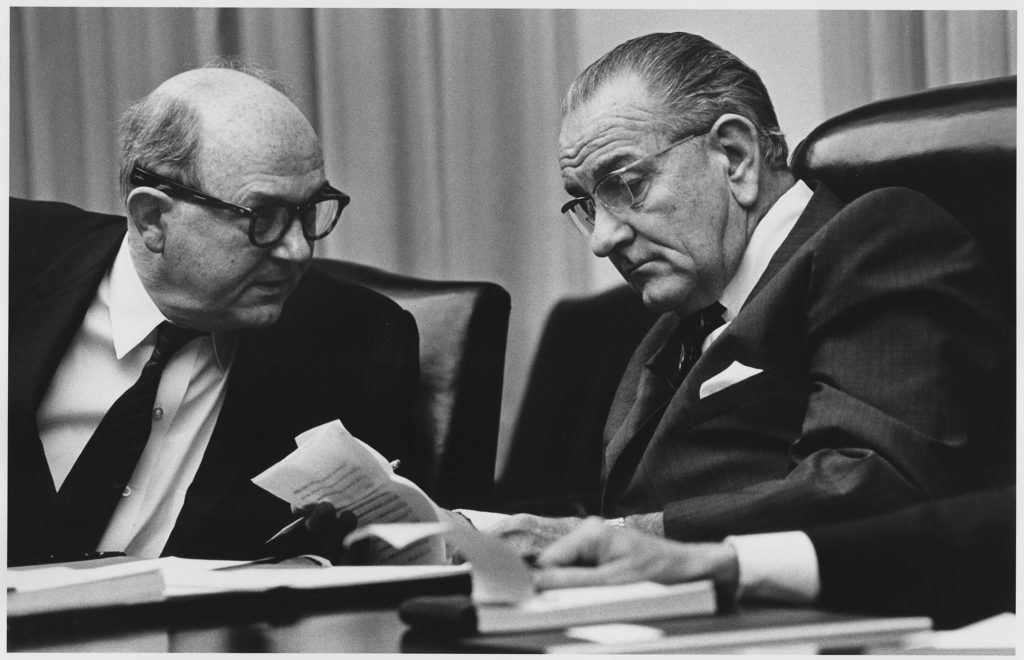
Secretary of State Dean Rusk confers with President Lyndon Johnson.
Among young employees in the State Department at this time was Dean Rusk, who was director of the Office of Special Political Affairs. He had served as a trusted aide to Gen. Joseph Stilwell in the China-Burma-India Theater during World War II, and joined the State Department just after the war. He was a strong supporter of the Marshall Plan, and an admirer of Marshall. Rusk went on to serve as secretary of state for eight years under presidents Kennedy and Johnson.
There were, of course, many other men and women who served in the State Department with Secretary Marshall, and restoring and stabilizing Europe took the dedication of all of them.
Melissa has been at GCMF since fall 2019, and previously was an academic librarian specializing in history. She and her husband, John, have three grown children, and live in Rockbridge County with two large rescue dogs. Keep up with her @MelissasLibrary.
